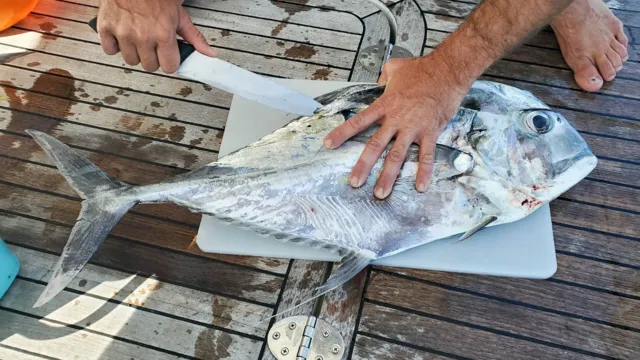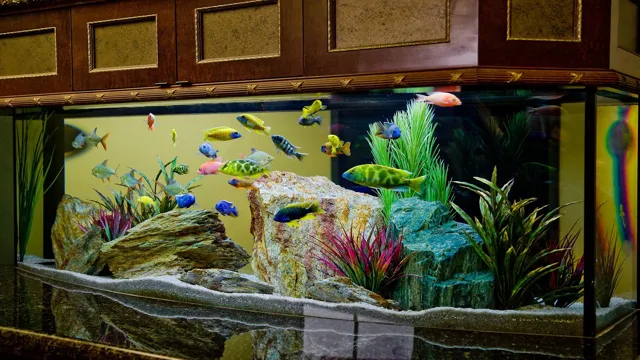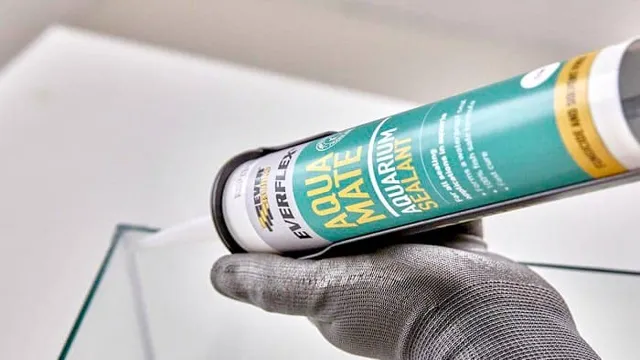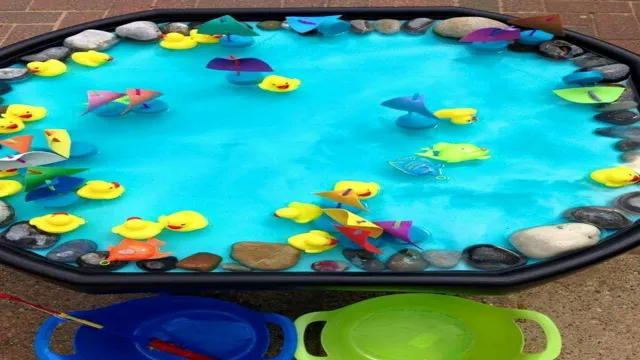How to Kill Aquarium Fish Humanely: 7 Ways to End Their Lives Painlessly

Keeping an aquarium can be a rewarding hobby, but it comes with responsibilities. One of the most critical aspects of maintaining an aquarium is caring for the fish. Unfortunately, there may come a time when you need to humanely euthanize your aquarium fish.
This can be a difficult decision to make, but it is essential to ensure the well-being of your fish. Perhaps you have noticed signs of illness or injury in your fish, and despite your best efforts, they are not improving. Or maybe you need to downsize your aquarium and do not have the space to accommodate all of your fish.
Whatever the reason, it is crucial to euthanize your fish in a humane and ethical manner. There are several methods for humanely euthanizing aquarium fish, including clove oil, freezing, and stunning. Each method has its pros and cons, and it is essential to examine them carefully before making a decision.
Additionally, it is crucial to research the specific needs of your fish species to ensure that you are using the best possible method. Euthanizing a pet can be a difficult and emotional process. It is natural to feel sadness and guilt when making this decision.
However, it is important to remember that euthanasia is often the kindest option for your fish, and it is a responsible way to ensure that they do not suffer needlessly. By following the proper procedures and doing your research, you can ensure that your fish pass away peacefully.
Reasons for Humane Killing
Aquarium fish can be a wonderful addition to any home, but sometimes humane killing becomes necessary. There are several reasons why you may need to kill your fish, including illness or aggression towards other fish in the tank. Nobody likes to think about euthanizing a beloved pet, but it is important to do so in a humane way.
One method to ensure humane killing is to use clove oil. This natural sedative can be added to the fish’s water, causing them to fall into a deep sleep. Once the fish is completely unconscious, it is safe to add a small amount of alcohol, which will cause the fish to die painlessly.
While it may be difficult to say goodbye to your aquarium fish, it is important to prioritize their well-being and treat them with the respect and care they deserve, even in their final moments.
Fish Disease or Illness
One of the most difficult decisions a fish owner can make is whether to euthanize their fish due to illness or disease. However, there are times when humane killing is necessary to prevent the fish from suffering. The most common reasons for humane killing are severe injuries, irreversible health conditions, or contagious diseases that could harm other fish in the tank.
For instance, if a fish has a fungal infection that has spread throughout its body, it may be necessary to consider putting the fish to sleep. While some may believe that this is a harsh option, it is a more humane choice than allowing the fish to suffer and possibly infect other fish in the tank. It’s important to understand that the decision to euthanize a fish should not be taken lightly, but rather be based on the best interest of the fish.
It’s crucial that this difficult decision is made in a humane and respectful way, such as using clove oil or other humane methods to minimize pain and suffering.

Overcrowding and Limited Space
One of the major reasons for humane killing is overcrowding and limited space. When there are too many animals in a confined area, it can lead to aggression, stress, and even disease. Animals might fight over resources such as food, water, and space, which can lead to injuries and even death.
Additionally, overcrowding makes it difficult for caretakers to provide individual attention and care to each animal, which can also affect their well-being. In order to prevent these negative outcomes, humane killing is sometimes deemed necessary. While the decision to euthanize an animal is never easy, it is important to prioritize the overall welfare of the animal population.
By managing the number of animals and ensuring that they have adequate space and care, we can prevent overcrowding and the need for humane killing.
Humane Killing Methods
As aquarium owners, it is important to understand that there may come a time when we need to euthanize our fish. Although this can be a difficult decision to make, it is important that we choose a humane method to minimize any potential suffering. One recommended method is using clove oil, which acts as a sedative and ultimately leads to a painless death.
Simply mix a few drops of clove oil with water and let the fish inhale it until it falls unconscious, then add more clove oil to ensure it passes away peacefully. Another method is using ice water, which causes the fish to gradually lose consciousness and eventually succumb to the cold. To do this, slowly add ice cubes to the aquarium until the water temperature drops below 10°C.
It is important to note that it is never acceptable to flush fish down the toilet or let them die from neglect, and we are responsible for ensuring a peaceful end for our aquatic pets.
Using Clove Oil
Clove oil is commonly used as a humane killing method for fish and other aquatic animals. It is a natural anesthetic that can quickly and effectively put an animal to sleep, allowing for a painless and stress-free death. To use clove oil, simply mix a small amount with water and apply it to the animal’s water source.
As the oil dissolves, the animal will gradually become less responsive and eventually fall asleep. It is important to note that clove oil should only be used in small doses and with great care to avoid overdosing the animal. Additionally, it is important to dispose of the animal’s remains in a responsible and eco-friendly manner.
Overall, while the idea of killing an animal may be difficult, using humane methods such as clove oil can help to minimize their suffering.
Freezing Method
When it comes to humane killing methods, the freezing method is one of the most popular options out there. Essentially, this involves placing the animal in a freezer until it passes away. While it may sound harsh, it’s actually much less painful than some of the other methods that are used.
Freezing causes the animal to numb and lose consciousness before dying, which means it doesn’t experience any pain or distress as it passes away. Of course, like all humane killing methods, there are specific guidelines associated with using this technique properly. It’s important to ensure that the animal is kept in an environment that is safe and free from any hazards.
Additionally, it’s important to monitor the animal’s condition at all times so that you can take action if necessary. Overall, if done correctly, the freezing method is a humane and effective way to put an animal out of its misery.
Blunt Force Trauma Method
When it comes to humane killing methods, the blunt force trauma method is one of the most commonly used techniques for animals that are either too small or too difficult to handle. This method involves delivering a quick and forceful blow to the animal’s head using a specialized tool or instrument, such as a captive bolt gun or a blunt object like a hammer. The blunt force trauma method is considered humane because it causes immediate unconsciousness and rapid death.
This technique is particularly useful for animals that may be difficult to handle and restrain, such as feral cats or wild animals. However, it is important that the person performing the procedure is properly trained and skilled to ensure that it is carried out correctly and with minimal suffering for the animal. It is also important to note that this method is not suitable for use on larger animals or ones that can be easily restrained, as it may cause unnecessary pain and distress.
Overall, the blunt force trauma method is a reliable and effective method for quickly and humanely euthanizing small and difficult-to-handle animals.
Disposal Options
As pet owners, we hope to never have to face the difficult task of disposing of our aquarium fish. However, sometimes situations arise where humane euthanasia is necessary. One of the most humane ways to kill an aquarium fish is using clove oil, which is available at most online shops.
To do this, mix clove oil in warm water, then add the solution slowly to your aquarium tank over the course of several hours while monitoring the fish until they have passed. Another option is using carbon dioxide to create a gradual loss of oxygen in the tank, allowing the fish to pass peacefully. However, it’s crucial to note that flushing fish down the toilet or discarding them in the trash is not humane and can cause severe harm to the environment.
Remember to treat your beloved aquarium fish with the respect and care they deserve, even in their final moments.
Burying the Fish
When it comes to disposing of fish, there are a few options available. One popular method is burial. However, there are a few things to keep in mind if you decide to go this route.
First of all, it’s important to bury the fish deep enough that scavengers won’t be able to dig it up. This not only keeps your yard from smelling like fish, but it also prevents the spread of disease. Another thing to consider is the location of the burial.
You don’t want to bury the fish too close to any plants or water sources, as the decomposition process can be harmful to both. And finally, be sure to wrap the fish in a biodegradable material, such as newspaper or untreated cotton, before burying it. This helps to speed up the process and ensure that the fish decomposes properly.
So if you decide to bury your fish, make sure to take these precautions to ensure a safe and effective disposal.
Flushing the Fish
When it comes to disposing of fish, there are several options to consider that can address your needs, budget, and environmental concerns. One option is to flush your fish down the toilet. While it may seem like the most convenient method, it’s important to note that flushing live fish can have negative consequences for the environment and even damage your plumbing.
Additionally, some areas may have regulations against it. Another option is to bury your fish in the backyard or compost them. This can be a more eco-friendly option as it returns the organic matter back to the soil.
However, be mindful of any local regulations or potential impact on groundwater quality. Alternatively, contacting a pet cremation service can be an ethical and respectful way of disposing of your fish. You can rest assured that your pet will be handled with care, and the remains can be returned to you in an urn or another appropriate container.
Ultimately, the decision of how to dispose of your fish depends on your personal preferences and access to resources.
Conclusion
Well, after much research and consideration, the best way to kill aquarium fish humanely is to simply not kill them at all. Instead, take the necessary steps to properly care for your fish and give them a comfortable, healthy environment to live in. Remember, they may be small and seemingly insignificant, but every living creature deserves to be treated with respect and kindness.
So, let’s leave the killing to the superheroes in comic books and focus on being responsible and compassionate pet owners. After all, there’s nothing fishy about that!”
FAQs
What is the most humane method of euthanizing an aquarium fish?
The most humane way to euthanize an aquarium fish is by using clove oil or using a quick blow to the head.
Can I use carbon dioxide to euthanize my fish?
Yes, carbon dioxide can be used to euthanize aquarium fish, but it requires special equipment and training.
Is freezing a humane way to euthanize a fish?
Freezing is not a recommended method of euthanasia as it can cause prolonged suffering and is considered inhumane.
How can I prevent the need to euthanize my aquarium fish?
Regularly monitoring water quality, providing proper nutrition and care, and quarantining sick fish can prevent the need for euthanasia.
Is it ethical to euthanize an aquarium fish?
Euthanasia may be necessary in cases of severe illness or injury where the fish is suffering, but it should always be done in a humane and ethical way.
Can I donate my sick aquarium fish to a pet store or aquarium?
It is not recommended to donate sick or dying fish to pet stores or aquariums as it can introduce disease to other fish and is not a humane solution.
What should I do with my fish’s body after euthanasia?
Properly disposing of the fish’s body by burying it or wrapping it in newspaper and throwing it in the trash is recommended. Do not flush it down the toilet or release it into the wild.






